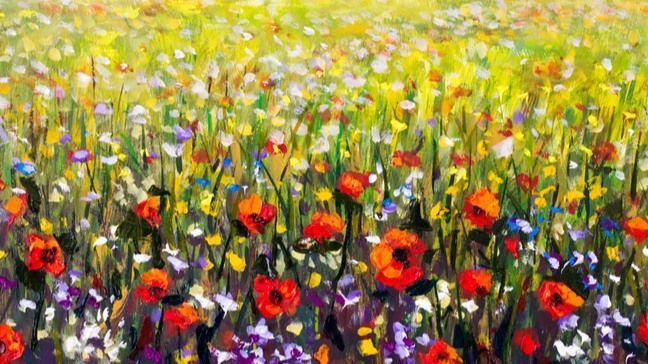Art can do more than decorate a living space. The art market has become one of the hottest new investment crazes in recent years. Art and sculpture collectors often buy items with an eye to adding to their investment portfolio.
But is investing in art really profitable for you? Or is this new asset class basically a hype?
Is fine art a good investment?
This question really depends on your personal investment goals.
Like stocks and bonds, art can rise in value. If a budding artist has a successful career, the monetary value of his work will skyrocket. According to Art Basel’s annual report, sales in the global art market have reached over $65 billion in 2021.
But before diving into the art of investing, you should consider the following factors:
1. Art is a long-term investment
Profits from art will not happen overnight. Experts recommend investing in art for patient investors with time window of 10 years or moreso think long term.
Many art investors include paintings in their estate plans as assets to pass on to posterity.
2. The art market follows its own rules
One of the main advantages of art as an asset is that its value does not rise or fall with the stock market. Even if your stocks don’t perform well, your art investments can be successful—good news for the savvy investor who wants to diversify their portfolio and minimize risk.
And ideally, though not always, art will continue to rise in value over time.
Read more: A 4-Step Guide to Diversifying Your Portfolio
3. Art is risky
Every piece of art is unique and the art market has its ups and downs just like any other market.
Since it’s impossible to determine the true value of a work of art – a lot depends on the reputation of the artist and the economy as a whole – you should be comfortable taking some risk.
Read more: How to determine your investment risk tolerance
How to invest in art
Start by determining how much money you are willing to spend. This should be the amount you can afford to part with if the artwork depreciates. Be sure to consider possible storage and maintenance costs.
Then learn as much as you can about the art world. Visit local galleries and see what they have to offer; chat with the curators, who, as a rule, will be happy to answer any of your questions.
Source: Giphy.com
If you live in or near the city, you are probably close to opening galleries and art fairs where emerging artists tend to showcase their work.
Browse sites like Artnet and online auctions such as Sotheby’s to understand how the market works.
Once a piece or artist grabs your attention, you can start narrowing down your search to find out how much a particular piece of art is worth. Have a work of art assessed by a professional appraiser to determine its quality.
You can either purchase the artwork yourself (often the more expensive option) or buy art shares through the online marketplace.
Online Art Markets
Since this is the information age, many high-end artworks are being sold online. But before you buy online, make sure you’re buying from a legitimate gallery, dealer, or investment firm.
Masterworks is a great online option, especially for budding art investors because they do most of the work for you. Masterpieces buys paintings and sells shares to investors, informing you about the investment as it progresses.
With Masterworks, you don’t actually own or store the artwork. Instead, you and a few other investors buy stakes in high-value works that are authenticated by experts. Masterworks has no specific minimum investment amounts; the minimums vary depending on the specific investment offers available at the time of investment.
There is a similar marketplace Art by Saatchi, where you can browse and buy directly online.
What you need to know before investing in art
It should only be a small part of your portfolio

Source: Tenor.com
For most people, art will only be a small part of a well-balanced investment portfolio. You can make a profit, but it’s unlikely that you’ll get huge payouts from art alone.
Think of it like real estate investment: optional, optional. Don’t rely on investing in art for a steady income. And don’t forget that you will pay taxes on any profits, since the IRS considers art to be a collectible.
Read more: Asset allocation for young investors
Art is illiquid
It is important to remember that art is an illiquid or illiquid asset. This means that it is difficult to immediately convert it into cash.
Liquid assets like stocks, bonds, and savings accounts can make money more easily. Illiquid assets such as real estate and art take much longer to sell, even if they have a higher monetary value.
While it is possible to sell your art, most investors do not. The auction house, your best bet for selling, often charges hefty fees. Because art prices fluctuate regularly, there is no guarantee that a sale will make you a profit.
When should you invest in art?
Here are some signs that the reward may outweigh the risk.
you enjoy art
Most art investors start out as collectors. If you love going to galleries and are already looking for a great piece for your home, turn this rating into an asset! But if you don’t like art per se, other investment options will serve you better.
You don’t have to be a collector to start investing in art. You can keep your investment up to one or two installments. But knowing the art world – or working with someone who has that knowledge – is key if you want to pick winners.
Earnings would be great, but you do not count on it

Source: Giphy.com
The best approach to investing in art? First think about aesthetic pleasure, and then about financial benefits.
Welcome any profit, but don’t plan your financial future around making that profit. Any money earmarked for retirement, for example, should go into other assets. In fact, one study from Stanford says that art is unlikely to enhance any portfolio.
Bottom line: don’t invest in art anything you can’t afford to lose.
Are you ready to explore
However, art investors can choose works of great long-term value. But come in informed, as if you were investing in the stock market.
Start by researching the author of the work you are considering. Ask the following questions:
- Are their works included in any museums or famous collections?
- Have they received awards or other recognition for their work?
While up-and-coming artists can be exciting, their reputation may or may not be long-lasting. And this will affect the cost of their piece.
you can afford the service
Art investors gain control over their assets, which can be a bonus. But you are responsible for keeping the artwork in pristine condition, which means controlling things like humidity and sunlight.
If you are displaying a work of art, you must ensure that it retains its original quality. If you place it in storage, you will also pay for it. Add in the cost of insurance and the cost of a certificate of authenticity and your service bill goes up.
What to look for when buying art
The art world is wide, so to narrow down your search, select a genre or time period that interests you. Then find an expert to help you look.
We recommend working with an art consultant or an art investment company (we’ve listed some options below).
Having someone in your corner will help when it’s time to determine the fair market value of a piece of art, making sure you’re worth your money.
Once you’ve found your area of work, find out what item you’re buying.
- Originals or one-of-a-kind works of art have the highest price, but also the greatest potential return.
- imprints or copies are more readily available but less likely to turn a profit. The highest quality printing is known as giclee (zhee-klay). It is similar to the original work than other reproductions, but also more expensive. As a rule, rarer prints are more valuable. One print from a small number of limited editions will be more valuable than a print with many copies.
- reproductions are serial copies without a limited edition. They are the most affordable option, but they also cost the least. You probably won’t see any profit from the reproduction.
No matter what, look for quality and good condition. Especially for expensive investments, it is worth spending the extra money to get an appraisal.
Where to look for art
Museums and galleries are of course great options. Explore any galleries beforehand to find out as much as possible.
Auction houses where you can bid on art are a more intense environment, but you can win a masterpiece if you’re lucky. Be aware that auction houses often charge a premium to the buyer in addition to the price of the sticker.
Bottom line: is it worth investing in art?
If you want a guaranteed return on the money you invest, or if you don’t have a lot of money to work with, you’re probably safer to skip art houses and stick with liquid assets. Brand new investors should also give their portfolio enough time to mature before making the jump.
But for seasoned, confident investors who are passionate about art and have additional funds to cover expenses, investing in a painting or sculpture can be an exciting way to diversify a portfolio.


